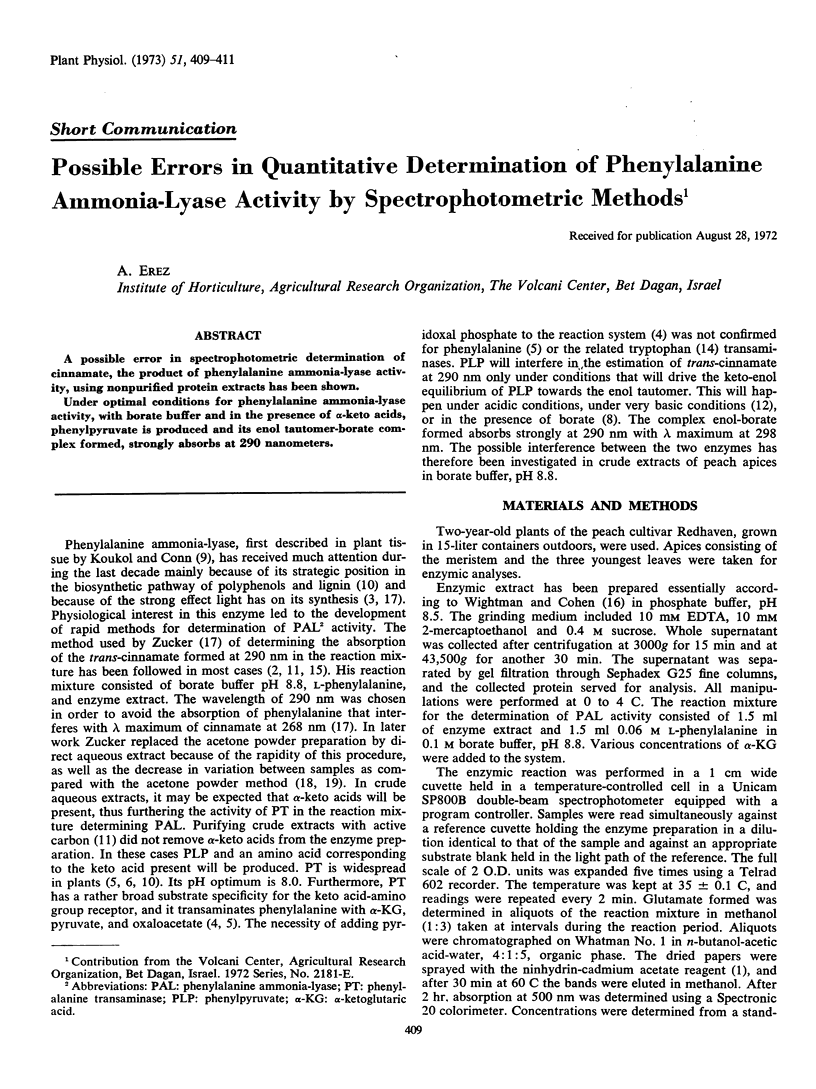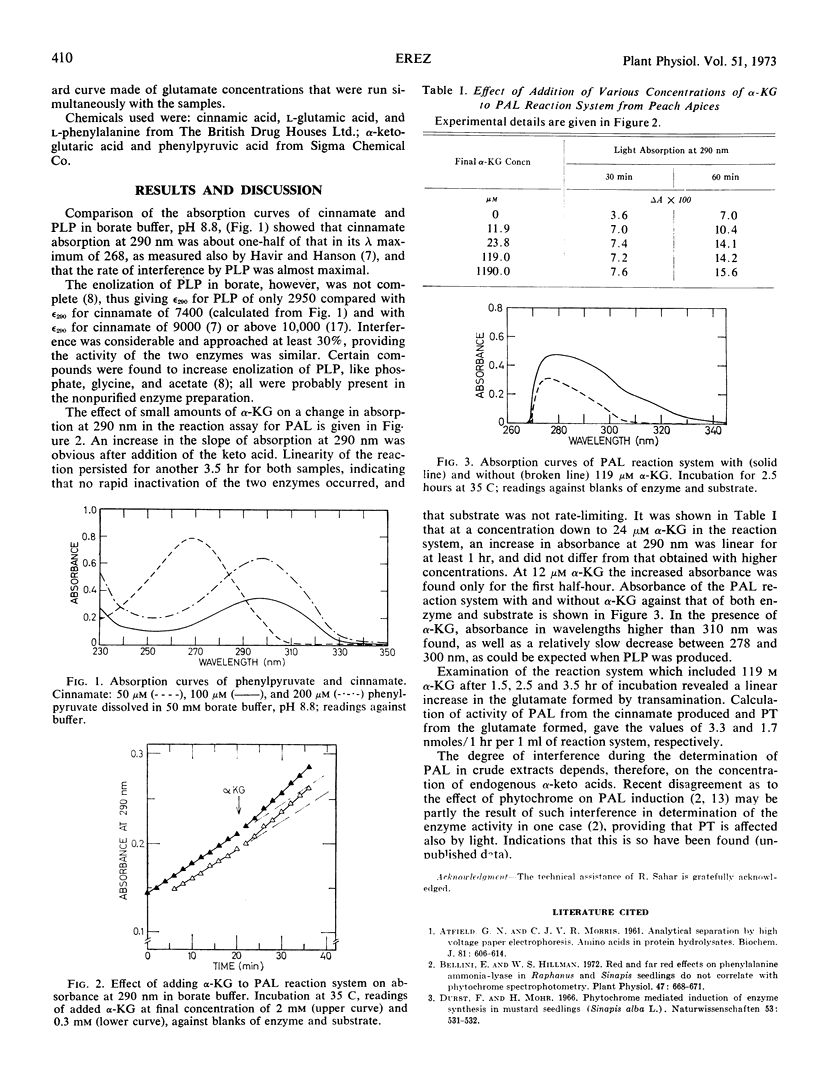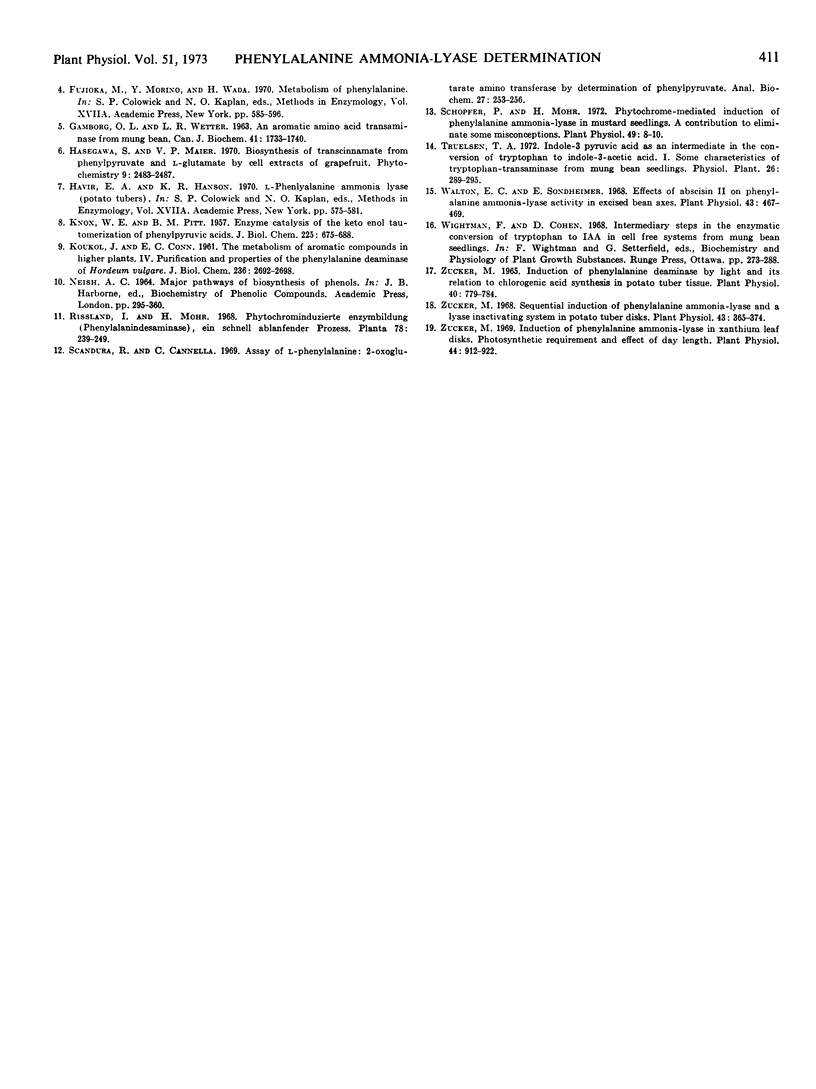Abstract
A possible error in spectrophotometric determination of cinnamate, the product of phenylalanine ammonia-lyase activity, using nonpurified protein extracts has been shown.
Under optimal conditions for phenylalanine ammonia-lyase activity, with borate buffer and in the presence of α-keto acids, phenylpyruvate is produced and its enol tautomer-borate complex formed, strongly absorbs at 290 nanometers.
Full text
PDF


Selected References
These references are in PubMed. This may not be the complete list of references from this article.
- ATFIELD G. N., MORRIS C. J. Analytical separations by highvoltage paper electrophoresis. Amino acids in protein hydrolysates. Biochem J. 1961 Dec;81:606–614. doi: 10.1042/bj0810606. [DOI] [PMC free article] [PubMed] [Google Scholar]
- Bellini E., Hillman W. S. Red and far red effects on phenylalanine ammonia-lyase in raphanus and sinapis seedlings do not correlate with phytochrome spectrophotometry. Plant Physiol. 1971 May;47(5):668–671. doi: 10.1104/pp.47.5.668. [DOI] [PMC free article] [PubMed] [Google Scholar]
- Durst F., Mohr H. Phytochrome-mediated induction of enzyme synthesis in mustard seedlings(Sinapis alba L.). Naturwissenschaften. 1966 Oct;53(20):531–532. doi: 10.1007/BF00600655. [DOI] [PubMed] [Google Scholar]
- KNOX W. E., PITT B. M. Enzymic catalysis of the keto-enol tautomerization of phenylpyruvic acids. J Biol Chem. 1957 Apr;225(2):675–688. [PubMed] [Google Scholar]
- KOUKOL J., CONN E. E. The metabolism of aromatic compounds in higher plants. IV. Purification and properties of the phenylalanine deaminase of Hordeum vulgare. J Biol Chem. 1961 Oct;236:2692–2698. [PubMed] [Google Scholar]
- Scandurra R., Cannella C. A ssay of L-phenylalaine:2-oxoglutarate aminotransferase by determination of phenyl pyruvate. Anal Biochem. 1969 Feb;27(2):253–256. doi: 10.1016/0003-2697(69)90029-3. [DOI] [PubMed] [Google Scholar]
- Schopfer P., Mohr H. Phytochrome-mediated Induction of Phenylalanine Ammonia-Lyase in Mustard Seedlings: A Contribution to Eliminate Some Misconceptions. Plant Physiol. 1972 Jan;49(1):8–10. doi: 10.1104/pp.49.1.8. [DOI] [PMC free article] [PubMed] [Google Scholar]
- Walton D. C., Sondheimer E. Effects of Abscisin II on Phenylalanine Ammonia-Lyase Activity in Excised Bean Axes. Plant Physiol. 1968 Mar;43(3):467–469. doi: 10.1104/pp.43.3.467. [DOI] [PMC free article] [PubMed] [Google Scholar]
- Zucker M. Induction of Phenylalanine Deaminase by Light and its Relation to Chlorogenic Acid Synthesis in Potato Tuber Tissue. Plant Physiol. 1965 Sep;40(5):779–784. doi: 10.1104/pp.40.5.779. [DOI] [PMC free article] [PubMed] [Google Scholar]
- Zucker M. Induction of phenylalanine ammonia-lyase in Xanthium leaf disks. Photosynthetic requirement and effect of daylength. Plant Physiol. 1969 Jun;44(6):912–922. doi: 10.1104/pp.44.6.912. [DOI] [PMC free article] [PubMed] [Google Scholar]
- Zucker M. Sequential Induction of Phenylalanine Ammonia-lyase and a Lyase-inactivating System in Potato Tuber Disks. Plant Physiol. 1968 Mar;43(3):365–374. doi: 10.1104/pp.43.3.365. [DOI] [PMC free article] [PubMed] [Google Scholar]


